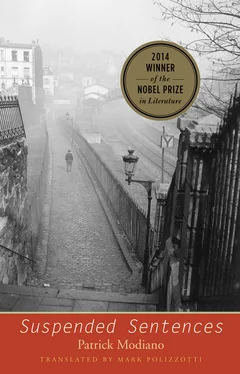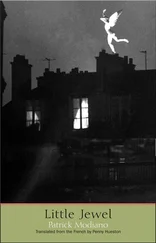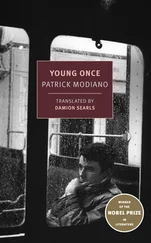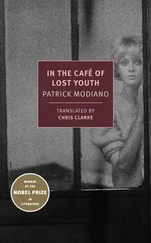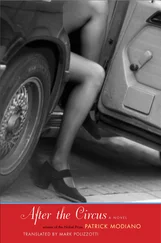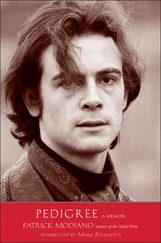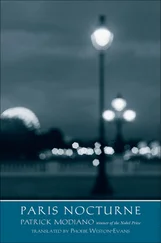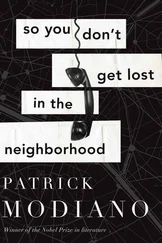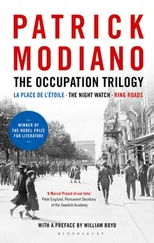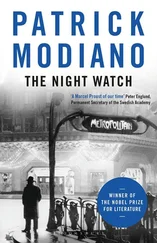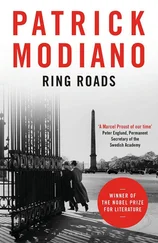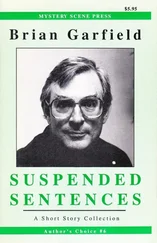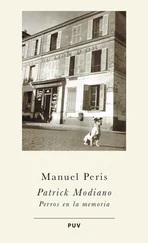From what he’d confided, he had known the Meyendorffs long before the time when they’d figured in the photo, in the garden with Colette Laurent. He’d met them when he was nineteen. Then the war had broken out. Since Mme de Meyendorff was American, she and her husband had set sail for the United States, leaving Jansen the keys to their Paris apartment and their country house, where he had spent the first two years of the Occupation.
I’ve often thought that the Meyendorffs would have been the people most likely to provide information about Jansen. When he left Paris, I had finished my work: all the materials I’d gathered about him were in the red notebook, the alphabetical index, and the album Snow and Sun , which he’d been kind enough to give me. Yes, if I had wanted to write a book about Jansen, I’d have had to go see the Meyendorffs and take notes on what they said.
Some fifteen years ago, I was leafing through the red Clairefontaine notebook and, discovering Dr. de Meyendorff’s calling card in its pages, I dialed his phone number, but it was “no longer in service.” The doctor wasn’t listed in that year’s phone book. To settle the matter once and for all, I went to 12 Rue Ribéra, where the concierge told me she didn’t know anyone by that name in the building.
That Saturday in June, so close to summer vacation season, it was very warm at around two in the afternoon. I was alone in Paris, with the prospect of a long, idle day ahead of me. I decided to go to the other address on the doctor’s card, in the Seine-et-Marne region. Naturally, I could have tried information to find out if a Meyendorff still lived in Fossombrone, and if so call him on the phone, but I decided I’d rather see for myself, on site.
I took the metro to the Gare de Lyon, then bought a ticket for Fossombrone at the window for the commuter trains. I had to change at Melun. The compartment I entered was empty, and I was practically giddy at the thought of having found a purpose to my day.
It was while waiting on the platform of Melun station for the branch line to Fossombrone that my mood shifted. The early afternoon sun, the few travelers, and the thought of visiting people whom I’d only seen once, fifteen years before, and who had probably either died or forgotten me, suddenly made everything seem unreal.
There were two of us in the small local train: a woman in her sixties, carrying a shopping bag, had sat down opposite me.
“Good lord, this heat …”
I was reassured at hearing her voice, but surprised that it was so clear, with a slight echo. The leather of the seats was burning hot. There wasn’t a single area in the shade.
“Will we arrive in Fossombrone soon?” I asked her.
“It’s the third stop.”
She rummaged through her shopping bag and finally found what she was looking for: a black wallet. She kept silent.
I wished I could have broken the silence.
She got off at the second stop. The local started up again and I was gripped by panic. I was alone now. I was afraid the train would take me on an endless journey, gradually gathering more and more speed. But it slowed down and stopped at a small station with tan walls on which I read FOSSOMBRONE in dark red letters. Inside the station, next to the ticket windows, a newspaper stand. I bought a daily after making sure of the date and skimmed the headlines.
I asked the news dealer if he knew a house named Le Moulin. He told me to follow the main road out of the village and continue straight on to the edge of the forest.
The shutters of the houses on the main road were closed to ward off the sun. No one was outdoors, and perhaps I should have worried about being alone in the middle of this unfamiliar village. The main road now turned into a wide path lined with plane trees, whose leaves barely let the sun’s rays filter through. The silence, the stillness of the leaves, the dapples of sunlight I walked on brought back the sensation of being in a dream. I again checked the date and the headlines on the newspaper I was holding, to keep me tied to the outside world.
On the left, just at the edge of the forest, stood a low surrounding wall and green wooden gate on which LE MOULIN was written in white paint. I stepped back from the wall and went across the path to get a better view of the house. It seemed to be composed of several farm buildings cobbled together, with nothing rustic about them: the balcony, the large windows, and the ivy climbing up the façade made them look like bungalows. The neglected garden was now just a clearing.
The surrounding wall made a right angle and continued for another hundred or so yards along a pathway that skirted the forest and led to several other properties. The one next to Le Moulin was a white villa shaped like a bunker with bay windows. It was separated from the pathway by a white fence and privet hedges. A woman in a straw hat was mowing the lawn and I was relieved to hear the hum of a motor break the silence.
I waited until she was near the entrance gate. When she saw me, she shut off the lawnmower. She took off her straw hat. A blonde. She came over and opened the gate.
“Does Doctor de Meyendorff still live at Le Moulin?”
I’d had trouble pronouncing those syllables. They sounded weird.
The blonde looked at me in surprise. My voice, my awkwardness, the sound of “Meyendorff” had something incongruous and formal about them.
“Le Moulin hasn’t been lived in for a long time,” she said. “At least not since I’ve been in this house.”
“Is it possible to go inside?”
“You’d have to ask the caretaker. He comes three times a week. He lives in Chailly-en-Bière.”
“You wouldn’t know where the owners are, by any chance?”
“I think they live in the States.”
In which case, there was a good chance it was still the Meyendorffs.
“Are you interested in the house? I’m sure it’s for sale.”
She had invited me into her garden and closed the gate behind me.
“I’m writing a book on someone who used to live here and I just wanted to see what the place was like.”
Once again I felt as if I’d used too formal a tone.
She led me to the back of her garden. A fence marked the boundary with the neglected grounds of Le Moulin. There was a large hole in the fence and she pointed to it.
“It’s easy to get to the other side …”
I couldn’t believe it. Her voice was so gentle, her eyes so clear, she was being so thoughtful … She had moved closer to me and I suddenly wondered if I was doing the right thing prowling around an abandoned house, on “the other side,” as she said, instead of staying with her and getting to know her better.
“While you’re over there, would you mind lending me your paper?”
“With pleasure.”
“I wanted to see what’s on television.”
I handed her the paper. She said:
“Take your time. And don’t worry — I’ll keep a lookout.”
I slid through the hole in the fence and emerged into the clearing. I walked toward the house. As I moved forward, the clearing gave way to an unkempt lawn bisected by a gravel path. Up close Le Moulin looked as much like a bungalow as it had from the entrance gate. To the left, the main house extended into a chapel, on which the door had been removed and which was now just a storage shed.
The shutters on the ground floor were closed, as were the two green panels of a French window. Two tall plane trees stood about ten yards apart, and their intermeshed foliage formed a roof of greenery that reminded me of a mall in a southern town. The sun was beating down, and it felt noticeably cooler in the shade.
It was definitely here that Jansen had taken the picture of Colette Laurent and the Meyendorffs. I recognized the plane trees and, to the right, the ivy-covered well with its coping. In the red notebook, I had written, “Photo of the Meyendorffs and Colette Laurent in Fossombrone. Shadows. Spring or summer. Well. Date unknown.” I had asked Jansen what year the photo was taken, but he’d only shrugged.
Читать дальше
